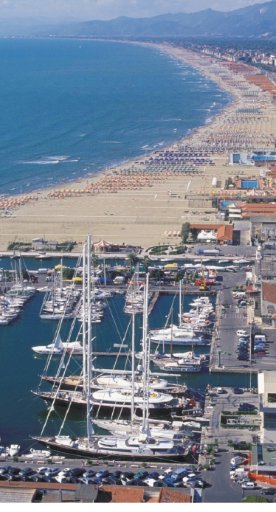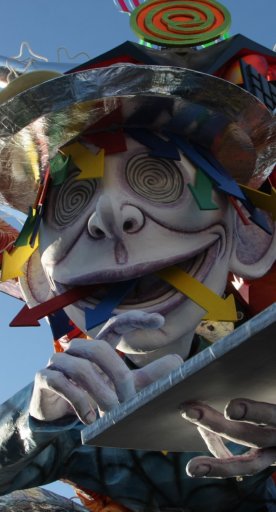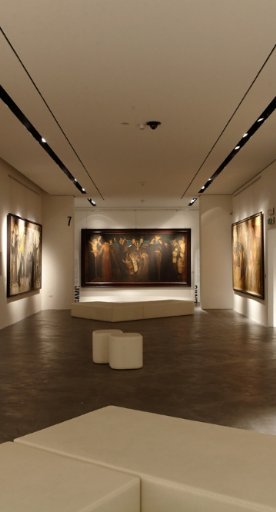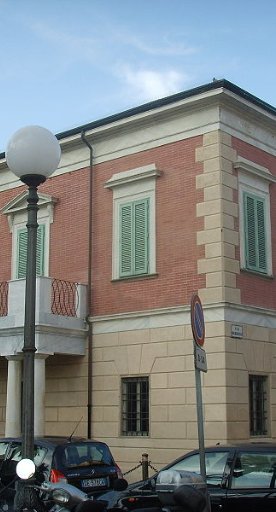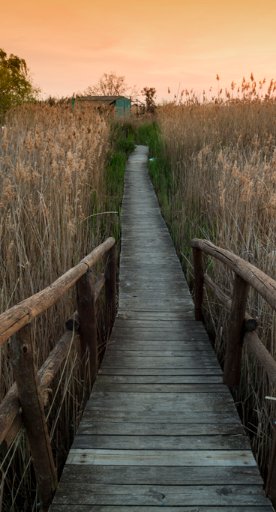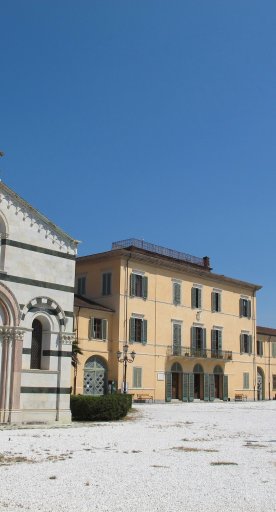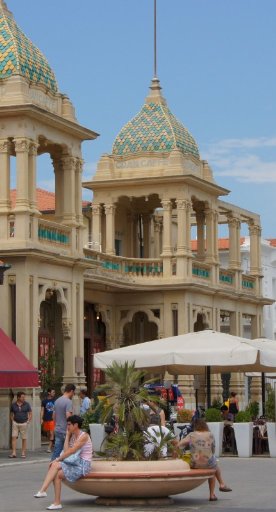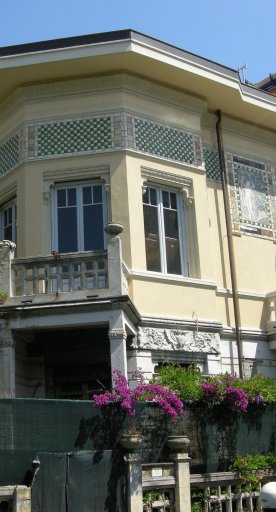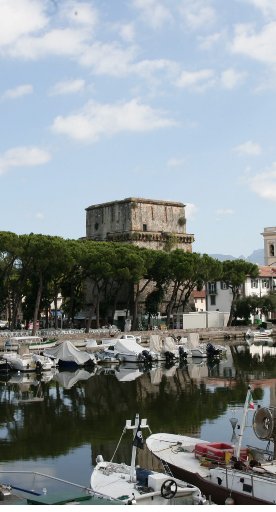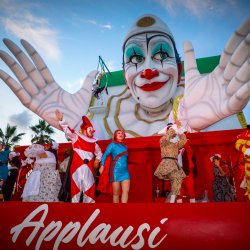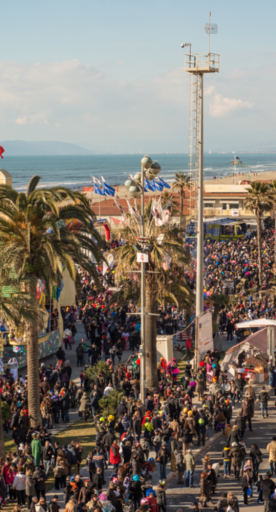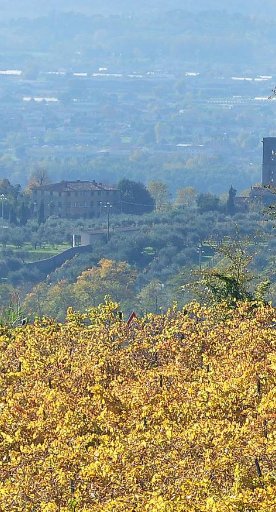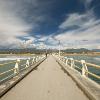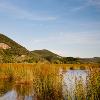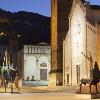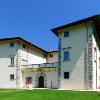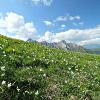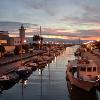Viareggio
The carnival city is one of the best-known seaside destinations in all of Versilia
Viareggio: where there’s sea on one side and the white peaks of the Apuan Alps on the other. Hasn’t everyone seen the classic snapshot of Viareggio? Stroll through the centre’s narrow streets, have an ice cream in the Pineta pine forest, take a trip to the sea in the Darsena quarter or, going even further, head to the most untouched part of the beach, the Lecciona (which is almost in Torre del Lago), and eat fish in one of the typical seafood trattorias, spending the day enjoying the authentic taste of the sea.
The most important city in Versilia, created as Lucca’s sea port, owes its name to the Via Regia, the road from the Middle Ages that passed from the city walls to the sea.
A bit of history
The city’s foundation dates back to 1172, when the people of Lucca and Genoa - allied against Pisa - built Torre Matilde, the oldest fortification in the city which, over time, began to be used as a bulwark against pirates. The original quarter of the city grew around the tower, developing along the Burlamacca canal, which is still an ideal mooring for fishermen and for those who own a small boat.
The evolution of Viareggio from a simple port to a city was a gradual process. It was only in 1819 that the Duchess Maria Luisa di Borbone had the first dock built, and the following year the town was promoted to the rank of city.
But just a couple of years later, in 1822, Viareggio began to prove its potential as a popular tourist destination, with Napoleon Bonaparte's sister (better known as Paolina Borghese) deciding to take a holiday here. Viareggio immediately became a fashionable resort, so much so that in 1828 the first bathing establishment was opened.
The city’s foundation dates back to 1172, when the people of Lucca and Genoa - allied against Pisa - built Torre Matilde, the oldest fortification in the city which, over time, began to be used as a bulwark against pirates. The original quarter of the city grew around the tower, developing along the Burlamacca canal, which is still an ideal mooring for fishermen and for those who own a small boat.
The evolution of Viareggio from a simple port to a city was a gradual process. It was only in 1819 that the Duchess Maria Luisa di Borbone had the first dock built, and the following year the town was promoted to the rank of city.
But just a couple of years later, in 1822, Viareggio began to prove its potential as a popular tourist destination, with Napoleon Bonaparte's sister (better known as Paolina Borghese) deciding to take a holiday here. Viareggio immediately became a fashionable resort, so much so that in 1828 the first bathing establishment was opened.
What to see in Viareggio
Viareggio is an attractive destination not just for seaside tourists, but also for lovers of the figurative arts. The Villa Paolina Civic Museum and the refined art-deco architecture, which characterize many of the city’s villas, are a must-see.
The boardwalk, a gorgeous avenue along the sea, is the town’s real artistic treasure and showcases some delightful Art Nouveau design. The Villa Argentina and the Caffè Margherita, which has for the most part remained intact since Giacomo Puccini’s frequent visits, are particularly noteworthy examples.
The Maritime Museum in the centre is also worth visiting, and offers a fascinating opportunity to discover the life and work of sailors.
The Cittadella del Carnevale (Carnival Citadel) is a large urban park dedicated to the city’s historical event, where papier-mâché masters, the craftsmen from Viareggio, build the carnival’s gigantic floats by hand.
Viareggio is an attractive destination not just for seaside tourists, but also for lovers of the figurative arts. The Villa Paolina Civic Museum and the refined art-deco architecture, which characterize many of the city’s villas, are a must-see.
The boardwalk, a gorgeous avenue along the sea, is the town’s real artistic treasure and showcases some delightful Art Nouveau design. The Villa Argentina and the Caffè Margherita, which has for the most part remained intact since Giacomo Puccini’s frequent visits, are particularly noteworthy examples.
The Maritime Museum in the centre is also worth visiting, and offers a fascinating opportunity to discover the life and work of sailors.
The Cittadella del Carnevale (Carnival Citadel) is a large urban park dedicated to the city’s historical event, where papier-mâché masters, the craftsmen from Viareggio, build the carnival’s gigantic floats by hand.
Nearby
Versilia is full of golden beaches with famous seaside resorts, such as Forte dei Marmi and Lido di Camaiore. The inland is dotted with small villages and natural parks, all waiting to be discovered, such as Massaciuccoli lake and the peaks of the Apuan Alps. There’s an abundance of archaeological sites, Romanesque churches, fortresses and medieval castles that bear witness to the deep history of an area inhabited since the Neolithic age.
Moreover, Versilia’s beaches are an ideal setting for carefree and cheerful films, fitting for the Italian summer holiday ambiance.
Versilia is full of golden beaches with famous seaside resorts, such as Forte dei Marmi and Lido di Camaiore. The inland is dotted with small villages and natural parks, all waiting to be discovered, such as Massaciuccoli lake and the peaks of the Apuan Alps. There’s an abundance of archaeological sites, Romanesque churches, fortresses and medieval castles that bear witness to the deep history of an area inhabited since the Neolithic age.
Moreover, Versilia’s beaches are an ideal setting for carefree and cheerful films, fitting for the Italian summer holiday ambiance.
Events
Viareggio’s name is synonymous with Carnival, one of the most famous and spectacular events in the world that is held in this very city. Each year, the event revives the parade of papier-mâché floats, with displays that attract tourists from all over.
The tradition of the Viareggio Carnival was created in 1873, when a group of young bourgeoisie who frequently visited the Casino Café formed the idea of a parade of carriages and masks along the promenade. Since then, for four Sundays in a row, the floats - huge caricatures that shine a glaring light on the world of politics and entertainment - parade along Viareggio's promenade.
After the parade, the entertainment continues in the districts. Every weekend of the Carnival, each of the four districts in turn holds a celebration, during which the streets are closed off to traffic and are instead filled with masks, music and dancing.
Viareggio’s name is synonymous with Carnival, one of the most famous and spectacular events in the world that is held in this very city. Each year, the event revives the parade of papier-mâché floats, with displays that attract tourists from all over.
The tradition of the Viareggio Carnival was created in 1873, when a group of young bourgeoisie who frequently visited the Casino Café formed the idea of a parade of carriages and masks along the promenade. Since then, for four Sundays in a row, the floats - huge caricatures that shine a glaring light on the world of politics and entertainment - parade along Viareggio's promenade.
After the parade, the entertainment continues in the districts. Every weekend of the Carnival, each of the four districts in turn holds a celebration, during which the streets are closed off to traffic and are instead filled with masks, music and dancing.
Typical products
The Viareggio Market is where you’ll be able to best experience the area’s gastronomy, acting as a local centre where you can immerse yourself in the local cuisine’s most intense flavours. Its extremely short supply chain means you can smell the scent of the sea only a few steps away, merging with that of fragrant fried fish or spaghetti alla marinara, allo scoglio or trabaccolara. The cacciucco is also unmissable.
The Viareggio Market is where you’ll be able to best experience the area’s gastronomy, acting as a local centre where you can immerse yourself in the local cuisine’s most intense flavours. Its extremely short supply chain means you can smell the scent of the sea only a few steps away, merging with that of fragrant fried fish or spaghetti alla marinara, allo scoglio or trabaccolara. The cacciucco is also unmissable.
What’s nearby?
Versilia


